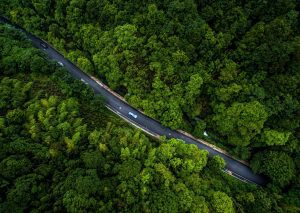In this post, I will summarize some of the major announcements outlining the roadmap for renewable energy in India during the recently concluded Clean Energy Ministerial (CEM-4). These energy policy announcements were made by Dr. Manmohan Singh, Prime Minister of India, and Montek Singh Ahluwalia, who is the Deputy Chairman of India’s Planning Commission. Major Indian and International Publications have covered these announcements like the Economic Times.
According to Prime Minster Singh, India plans to double the renewable energy capacity in the country from 25000 MW in 2012 to 55000 MW by the year 2017, by focusing on solar, wind and biomass energy. He also mentioned that India’s 12th Five year plan had a focus on increasing the efficiency of energy use to bring about a 20 to 25 per cent reduction in the energy intensity of India’s GDP by 2020. The Prime Minister also noted renewable energy was an essential part of this plan, and also that there was a strong justification for providing subsidies for promoting renewable energy market, because investments in the sector were subject to technological, commercial and regulatory risks. He noted “For the moment, green energy is not viable on its own without subsidy or regulatory incentives. Investors obviously need assurance that these incentives will continue .”
Montek Singh Ahluwalia, Deputy Chairman of India’s Planning Commission, emphasized the need for promoting renewable energy in India and stressed on providing incentives to enable the growth of this sector. He also stated that there was a need to create a viable and competitive domestic production base for this sector. While incorporation of renewable in the integrated energy policy for India might be difficult, the government was focused on doing the same. He also observed that “China has invested 10 times more than us in clean energy .”
While these are welcome comments, past experience has shown that renewable energy programs in many countries across the world have not met their full potential. These views are very well summarized by Andrew Steer, Preseident & CEO of WRI & Jamshyd Godrej, Chairman and Managing Director, Godrej & Boyce, in their post on the World Resources Institute blog. Steel and Mr. Godrej note that “The National Action Plan on Climate Change, launched in 2008, aims to have 15 percent of India’s electricity consumption from renewable energy by 2020. Currently, the country produces slightly more than 12 percent of its energy from renewables, putting it on track for that goal….The Renewable Portfolio Obligations is also providing support for renewable energy developers. Even so, the country is not yet achieving its full potential — which is critical for the 400 million people who lack access to basic electricity.”
One couldn’t agree more with their thoughts.




Conversation
Hi..
Thank you for posting this blog and sharing this information India’s policies on technology. India plans to double the renewable energy capacity in the country from 25000 MW in 2012 to 55000 MW by the year 2017, by focusing on solar, wind and biomass energy. this is very good post and very useful information..
thank you